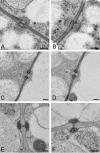Basidioascus undulatus: genome, origins, and sexuality
- PMID: 26203425
- PMCID: PMC4500085
- DOI: 10.5598/imafungus.2015.06.01.14
Basidioascus undulatus: genome, origins, and sexuality
Abstract
Basidioascus undulatus is a soil basidiomycete belonging to the order Geminibasidiales. The taxonomic status of the order was unclear as originally it was only tentatively classified in the class Wallemiomycetes. The fungi in Geminibasidiales have an ambiguously defined sexual cycle. In this study, we sequenced the genome of B. undulatus to gain insights into its sexuality and evolutionary origins. The assembled genome draft was approximately 32 Mb in size, had a median nucleotide coverage of 24X, and contained 6123 predicted genes. Previous morphological descriptions of B. undulatus relied on interpretation of putative sexual structures. In this study, nuclear staining and confocal microscopy showed meiosis occurring in basidia and genome analysis confirmed the existence of genes involved in meiosis and mating. Using 35 protein-coding genes extracted from genomic information, phylogenomic and molecular dating analyses confirmed that B. undulatus indeed belongs to a lineage distantly related to Wallemia while retaining a basal position in Agaricomycotina. These results, combined with differences in septal pore morphology, led us to move the order Geminibasidiales out of the Wallemiomycetes and into the new class Geminibasidiomycetes cl. nov. Finally, the concept of Agaricomycotina is emended to include both Wallemiomycetes and Geminibasidiomycetes.
Keywords: Agaricomycotina; Basidiomycota; Geminibasidiomycetes; Wallemiomycetes; septal pore ultastructure.
Figures




References
-
- Bauer R, Begerow B, Sampaio JP, Weiss M, Oberwinkler F. (2006) The simple-septate basidiomycetes: a synopsis. Mycological Progress 5: 41–66.
-
- Berbee ML, Taylor JW. (2010) Dating the molecular clock in fungi – how close are we? Fungal Biology Reviews 24: 1–16.
-
- Boetzer M, Henkel CV, Jansen HJ, Butler D, Pirovano W. (2011) Scaffolding pre-assembled contigs using SSPACE. Bioinformatics 27: 578–579. - PubMed
LinkOut - more resources
Full Text Sources
Other Literature Sources
Miscellaneous
